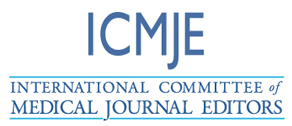Tetanus Update: Latest Diagnosis and Management
DOI:
https://doi.org/10.55677/IJCSMR/V4I4-01/2024Keywords:
Diagnosis, lockjaw, management, neonatal, tetanus.Abstract
Tetanus still contributes to a large number of deaths with a case fatality rate (CFR) of 11.76% in 2019. The increase in the number of cases and inadequate reporting are the reasons why tetanus management remains an important part of reducing patient mortality. Tetanus almost always occurs in patients who are not immune, partial or immune is inadequate. The diagnosis is made only from clinical manifestations, where the rigidity and spasm can be generalized (including neonatal tetanus) or local. Management of tetanus is divided into general management - with the administration of human tetanus immunoglobulin (HTIG) or serum anti-tetanus (ATS), antibiotics, magnesium, and wound care - and special management - which conforms to Ablett's classification system: mild, moderate, severe, and very heavy. Meanwhile, management in primary health care still adjusts the guidelines given by taking into account the availability of drugs. Prevention is carried out by giving immunizations to pregnant women, neonates and babies, as well as giving a booster every time an injury occurs.
References
Faulkner AE, Tiwari TSP. Tetanus. In: Roush SW, Baldy LM, Hall MAK, editors. Manual for surveillance of vaccine-preventable diseases. Atlanta: CDC; 2020. Chapter 16. p. 1-6.
Thwaites CL, Yen LM. Tetanus. In. Kasper DL, Hauser SL, Jameson JL, Fauci AS, Longo DL, Loscalzo J, editors. Harrison’s principles of internal medicine. 19th ed. New York: McGraw-Hill Education; 2015. p. 984-7.
Primadi O, Budijanto D, Hardhana B, Sibuae F, Widiantini W. Profil kesehatan Indonesia tahun 2019. Jakarta: Kementerian Kesehatan RI; 2020. p. 170-2.
Carroll KC, Hobden JA, Miller S, Morse SA, Meitzner TA, Detrick B, Mitchell TG, McKerrow JH, Sakanari JA. Jawetz, Melnick, & Adelberg’s medical microbiology. 27th ed. New York: McGraw-Hill Education; 2016. p. 184-6.
Hassel B. Tetanus: pathophysiology, treatment, and the possibility of using botulinum toxin against tetanus-induced rigidity and spasms. Toxins. 2013;5:73–83.
Rind NA, Taj MK, Taj I, Jan S, Ali SA, Mohammad G, Hussain A, Ali M, Rafeeq M, Zafar U, Essote SA, ul-Haq A, Samreen Z. Clostridium tetani as a pathogenic organism. International Journal of Biosciences. 2019;14(4):207–13.
Bernardes M, Presti SL, Ratzan K. A case of cephalic tetanus in elderly patient with trismus. Case Reports in Infection Diseases. 2018;1:1–3.
Kotani Y, Kubo K, Otsu S, Tsujimoto T. Cephalic tetanus as a differential diagnosis of facial nerve palsy. BMJ Case Report. 2017;1:1–3.
Sesama M, Gomber S, Yadav M. Cephalic tetanus presenting as ptosis. Indian Pediatrics. 2020;57(1):72–3.
Fan Z, Zhao Y, Wang S, Zhang F, Zhuang C. Clinical features and outcomes of tetanus: a retrospective study. Infection and Drug Resistence. 2019;12:1289–93.
Nyong EE, Udoh JJ, Inyang IJ, Oloyede IP, Udoh PA. Cluster of neonatal tetanus: case series from one traditional birth attendant’s home in Uyo, South-South Nigeria. Journal of Public Health and Epidemiology. 2020;12(4):305–9.
Yadav YR, Kala PC, Yadav S. Relative significance of incubation period and period of onset as a prognostic factor in tetanus. Rajasthan Medical Journal. 1987;24(4):167–70.
Cook TM, Protheroe RT, Handel JM. Tetanus: a review of literature. British Journal of Anaesthesia. 2001;87(3):477–87.
Srigley JA, Haider S, Johnstone J. A lethal case of generalized tetanus. Canadian Medical Association Journal. 2011;183(9):1045–8.
Bravo TE, Siregar ML, Jamil KF. Diagnosis and management of tetanus outside the intensive care unit: a case report. Earth and Environmental Science. 2018;125:1–3.
Moniuszko A, Zajkowska A, Tumiel E, Rutkowski K, Czupryna P, Pancewicz S, Rutkowski R, Zdrodowska A, Zajkowska J. Menigitis, clinical presentation of tetanus. Case Report in Infectious Disease. 2015;1:1–2.
Rampengan NH. Rabies post exposure prevention. Bali Medical Journal. 2017;6(2):449–55.
Davidson R, Brent A, Seale A, editors. Oxford handbook of tropical medicine. 4th ed. Oxford: Oxford University Press; 2014. p. 454-7.
World Health Organization. Current recommendation for treatment of tetanus during humanitarian emergencies. Geneva: WHO; 2010. p. 1-6.
Tierney LM, McPhee SJ, Papadakis MA, editors. Current medical diagnosis & treatment. 61th ed. New York: McGraw-Hill Education; 2022. p. 1469-71.
Downloads
Published
Issue
Section
License
Copyright (c) 2024 International Journal of Clinical Science and Medical Research

This work is licensed under a Creative Commons Attribution 4.0 International License.











